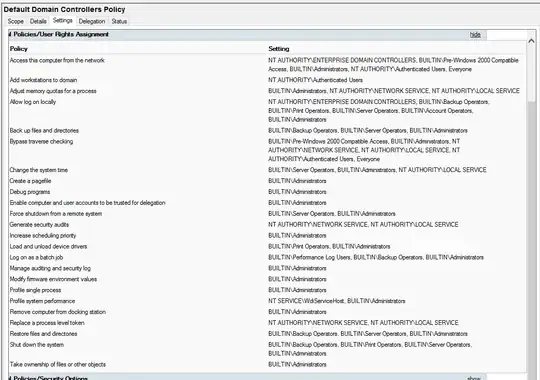I have an AP that serves both 2.4 and 5 GHz networks (on separate SSIDs, without fallback). The neighborhood is quite busy (residential neighborhood)
A ping from a wired device to a device on the 2.4 GHz network looks like this (the x axis is time, y is RTT in ms):
The equivalent ping on the 5 GHz network is much more stable ("flat").
While I understand that heavily loaded channels lead to worse performance, I am very curious about the regular nature of the graph.
I gathered a larger sample and can run it through a Fourier transform to get the frequencies (but I doubt that this would be of help?)

